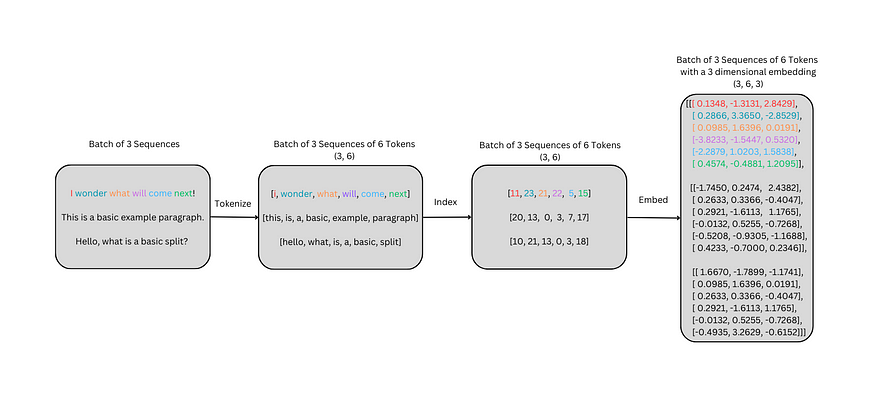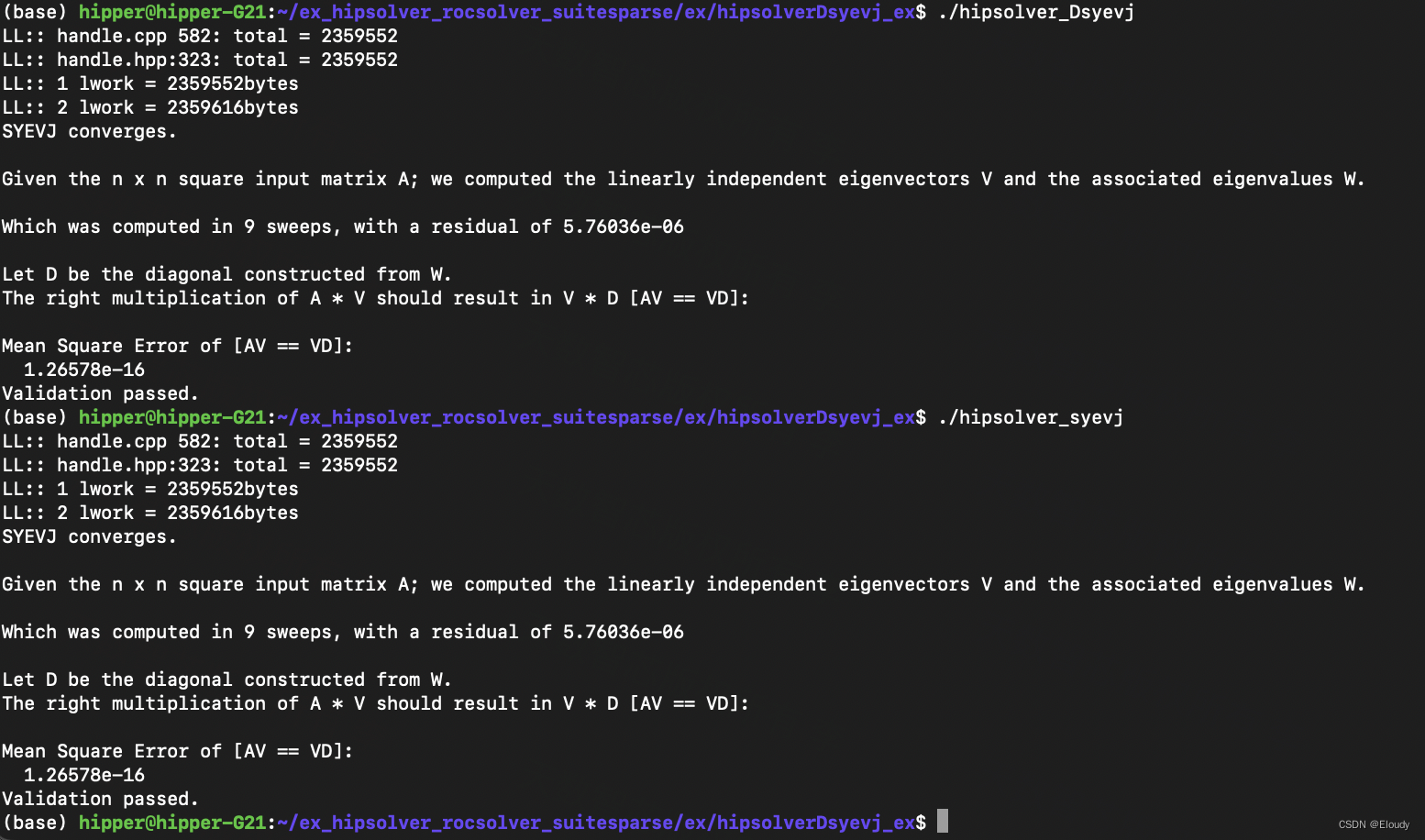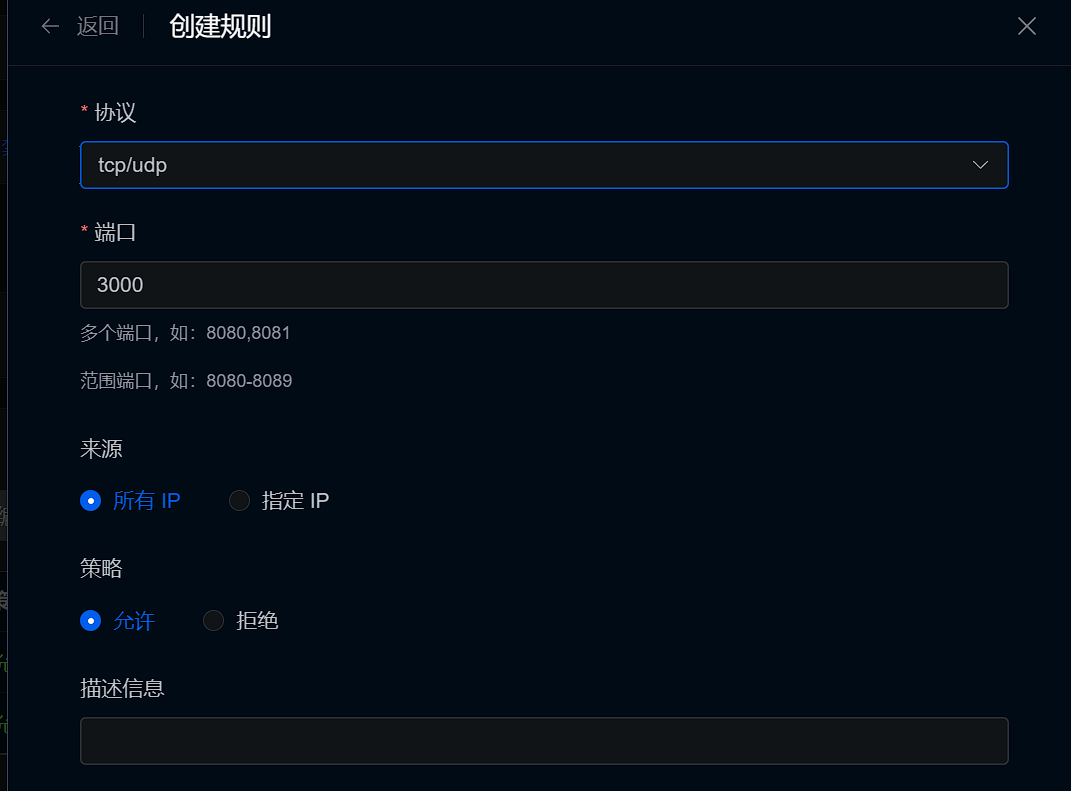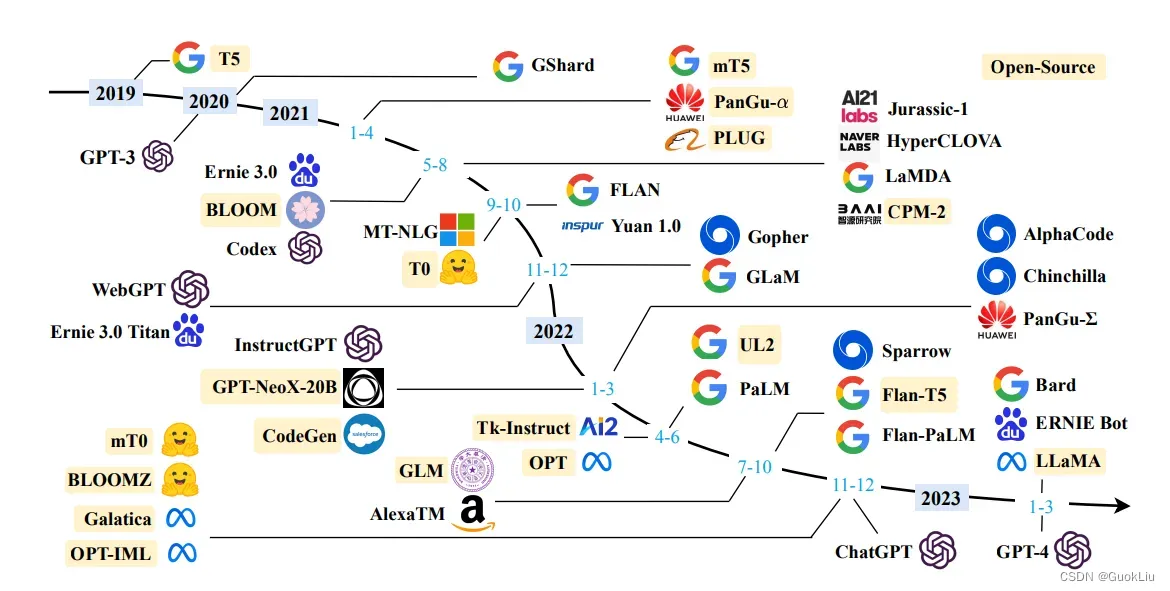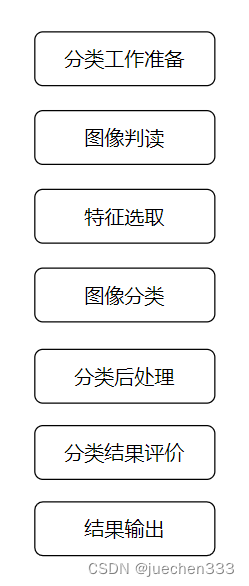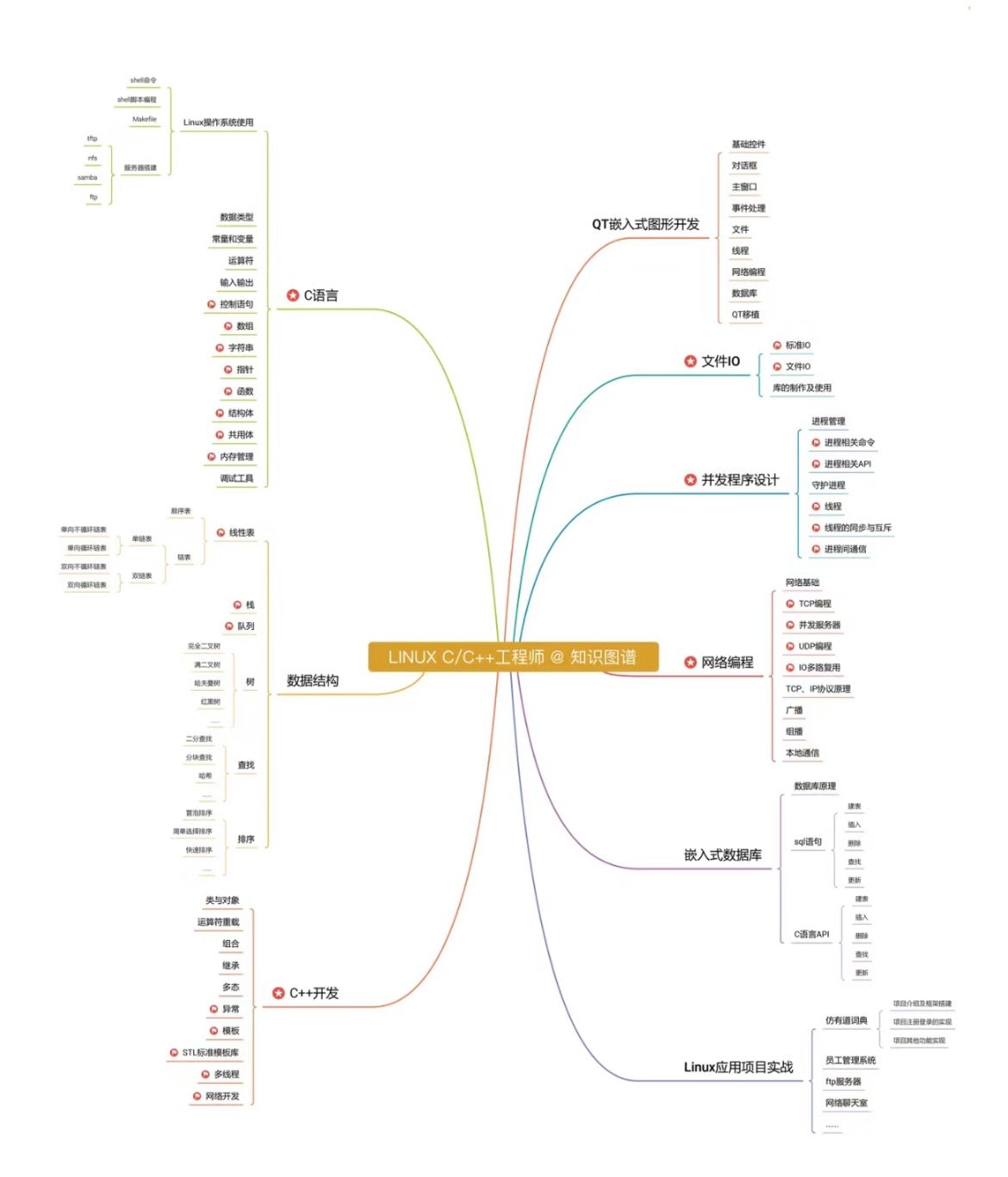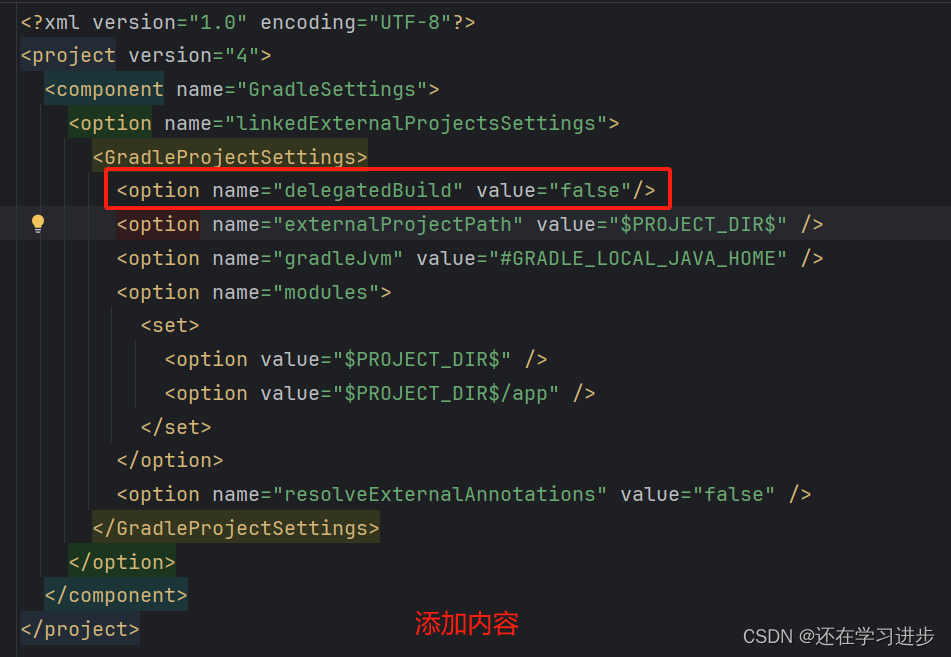故事背景
书接前几篇文章,仍然是交付甲方遇到的一个特殊诉求,从而引发了本期的事故。甲方的诉求是前端的请求过来,需要加密,但是要经过waf,必须要求是请求明文,那就要在waf和nginx之间做一个解密前置应用处理。大致架构图如下:
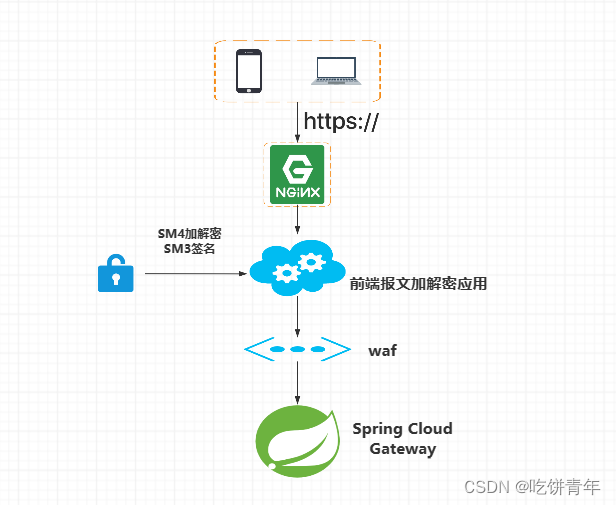
本次事故的起因是因为,经过waf的请求响应头信息增加了一个Content-Encoding:gzip导致的数据无法返回前端。
技术栈
nginx:1.16.1
springboot:2.5.14
hutool:5.8.15
NGINX下载:NGINX下载链接
情景再现
我们一点一点还原下,当时遇到的问题。我们这里需要两个java应用和一个nginx三个工程。注意下述不是完整代码,都是核心代码片段。只为说明问题产生的过程,所以不会大面积贴出所有代码!!!
前置服务
http调用目标服务核心代码
注意:此处代码重点在于使用hutool HttpRequest.execute()调用目标服务,其余方法理性观看!
public static HttpResponse executeAndGetResponse(HttpServletRequest request, String forwardAddr, String decryptData, String wafHost) {
if (decryptData == null) {
return executeAndGetResponse(request, forwardAddr, wafHost);
}
HttpRequest httpRequest = getHttpRequest(request, forwardAddr, wafHost);
Map<String, Object> copyForm = null;
if (httpRequest.form() != null) {
copyForm = new HashMap<>(httpRequest.form());
}
httpRequest.body(decryptData, request.getContentType());
//重新设置form,设置body时会将form设为null,所以需重新设置form
//TODO body和form二者只能存在一个,当form存在时,则body会被置为null,除了Get请求其他参数都要放到body体中
if (Objects.equals(RequestMethodEnum.GET.getMethod(), request.getMethod())
&& httpRequest.form() == null && CollectionUtil.isNotEmpty(copyForm)) {
httpRequest.form(copyForm);
}
HttpResponse response = httpRequest.execute();
return response;
}
响应流返回给ng核心代码
public static void returnStream(HttpResponse forwardResponse, HttpServletResponse response) {
//拷贝转发响应头携带的信息
Map<String, List<String>> headers = forwardResponse.headers();
if (CollectionUtil.isNotEmpty(headers)) {
log.info("----------------------------------------------");
for (Map.Entry<String, List<String>> entry : headers.entrySet()) {
if (CollectionUtil.isNotEmpty(entry.getValue())) {
response.addHeader(entry.getKey(), entry.getValue().get(0));
log.info("响应头信息:[{}:{}]", entry.getKey(), entry.getValue().get(0));
} else {
response.addHeader(entry.getKey(), "");
}
}
}
//输出响应日志
String contentType = forwardResponse.header("Content-Type");
if (StringUtils.isNotBlank(contentType) && contentType.toLowerCase().startsWith(MediaType.APPLICATION_JSON_VALUE)) {
String body = forwardResponse.body();
if (body.length() > 1000) {
log.info("请求响应长度大于1000,只打印前1000个字符,详情可查看转发服务:{}", StrUtil.cleanBlank(body).substring(0, 1000));
} else {
log.info("请求响应:{}", StrUtil.cleanBlank(body));
}
}
OutputStream outputStream = null;
GZIPOutputStream gzipOut = null;
try {
response.setCharacterEncoding("UTF-8");
outputStream = response.getOutputStream();
IoUtil.copy(forwardResponse.bodyStream(), outputStream);
outputStream.flush();
} catch (IOException e) {
log.error("流读取IO异常", e);
throw new RuntimeException(e);
} finally {
if (gzipOut != null) {
try {
gzipOut.close();
} catch (IOException e) {
throw new RuntimeException(e);
}
}
if (outputStream != null) {
try {
outputStream.close();
} catch (IOException e) {
throw new RuntimeException(e);
}
}
}
}
启动配置文件
spring.application.name=router
server.port=7070
waf.host=127.0.0.1
forward.url=http://${waf.host}:9090
目标服务
接口实现
import cn.hutool.core.io.IoUtil;
import com.alibaba.fastjson.JSON;
import lombok.extern.slf4j.Slf4j;
import org.springframework.web.bind.annotation.GetMapping;
import org.springframework.web.bind.annotation.RequestMapping;
import org.springframework.web.bind.annotation.RestController;
import javax.servlet.http.HttpServletRequest;
import javax.servlet.http.HttpServletResponse;
import java.io.IOException;
import java.io.OutputStream;
import java.util.HashMap;
import java.util.Map;
import java.util.zip.GZIPOutputStream;
@RestController
@RequestMapping("/hello")
@Slf4j
public class HelloController {
@GetMapping("/test")
public Map getTest() {
Map<String, String> ng = new HashMap<>();
ng.put("2", "333333333333333333333");
return ng;
}
@GetMapping("/test3")
public void getTest3(String a, String b, HttpServletResponse response) {
Map<String, String> ng = new HashMap<>();
ng.put("2", "Hello,received:" + a + b);
response.addHeader("Content-Encoding", "gzip");
OutputStream outputStream = null;
GZIPOutputStream gzipOut = null;
try {
response.setCharacterEncoding("UTF-8");
outputStream = response.getOutputStream();
log.info("--响应开始压缩--");
gzipOut = new GZIPOutputStream(outputStream);
IoUtil.write(gzipOut, false, JSON.toJSONBytes(ng));
gzipOut.flush();
gzipOut.finish();
log.info("--响应压缩完成--");
outputStream.flush();
} catch (IOException e) {
log.error("流读取IO异常", e);
throw new RuntimeException(e);
} finally {
if (gzipOut != null) {
try {
gzipOut.close();
} catch (IOException e) {
throw new RuntimeException(e);
}
}
if (outputStream != null) {
try {
outputStream.close();
} catch (IOException e) {
throw new RuntimeException(e);
}
}
}
}
@GetMapping("/test2")
public Map getTest2() {
Map<String, String> ng = new HashMap<>();
ng.put("2", "333333333333333333333333333333333333333333333333333333333333333333333333333333333333333333333333333333333333333333333333333333333333333333333333333333333333333333333333333333333333333333333333333333333333333333333333333333333333333333333333333333333333333333333333333333");
ng.put("3", "333333333333333333333333333333333333333333333333333333333333333333333333333333333333333333333333333333333333333333333333333333333333333333333333333333333333333333333333333333333333333333333333333333333333333333333333333333333333333333333333333333333333333333333333333333");
return ng;
}
@GetMapping("/gzip-test")
public void gzipTest(HttpServletRequest request, HttpServletResponse response) {
response.addHeader("Content-Encoding", "gzip");
OutputStream outputStream = null;
GZIPOutputStream gzipOut = null;
try {
response.setCharacterEncoding("UTF-8");
outputStream = response.getOutputStream();
log.info("--响应开始压缩--");
gzipOut = new GZIPOutputStream(outputStream);
Map<String, String> data = new HashMap<>();
data.put("name", "Kevin");
IoUtil.write(gzipOut, false, JSON.toJSONBytes(data));
gzipOut.flush();
gzipOut.finish();
log.info("--响应压缩完成--");
outputStream.flush();
} catch (IOException e) {
log.error("流读取IO异常", e);
throw new RuntimeException(e);
} finally {
if (gzipOut != null) {
try {
gzipOut.close();
} catch (IOException e) {
throw new RuntimeException(e);
}
}
if (outputStream != null) {
try {
outputStream.close();
} catch (IOException e) {
throw new RuntimeException(e);
}
}
}
}
@GetMapping("/gzip-test2")
public void gzipTest2(HttpServletRequest request, HttpServletResponse response) {
response.addHeader("Content-Encoding", "gzip");
OutputStream outputStream = null;
GZIPOutputStream gzipOut = null;
try {
response.setCharacterEncoding("UTF-8");
outputStream = response.getOutputStream();
log.info("--响应开始压缩--");
gzipOut = new GZIPOutputStream(outputStream);
Map<String, String> data = new HashMap<>();
data.put("name", "Mary");
IoUtil.write(gzipOut, false, JSON.toJSONBytes(data));
gzipOut.flush();
gzipOut.finish();
log.info("--响应压缩完成--");
outputStream.flush();
} catch (IOException e) {
log.error("流读取IO异常", e);
throw new RuntimeException(e);
} finally {
if (gzipOut != null) {
try {
gzipOut.close();
} catch (IOException e) {
throw new RuntimeException(e);
}
}
if (outputStream != null) {
try {
outputStream.close();
} catch (IOException e) {
throw new RuntimeException(e);
}
}
}
}
}
启动配置文件
spring.application.name=demo2
server.port=9090
nginx配置
#user nobody;
worker_processes 1;
error_log logs/error.log;
#error_log logs/error.log notice;
error_log logs/error.log info;
pid logs/nginx.pid;
events {
worker_connections 1024;
}
http {
include mime.types;
default_type application/octet-stream;
log_format main '$remote_addr - $remote_user [$time_local] "$request" '
'$status $body_bytes_sent "$http_referer" '
'"$http_user_agent" "$http_x_forwarded_for"';
access_log logs/access.log main;
sendfile on;
#tcp_nopush on;
keepalive_timeout 65;
upstream backend {
server 127.0.0.1:7070;
keepalive 50;
}
#gzip on;
server {
listen 6060;
server_name 127.0.0.1;
access_log logs/host.access.log main;
client_max_body_size 20m;
client_header_buffer_size 32k;
location / {
proxy_pass http://backend;
#proxy_http_version 1.1;
#proxy_set_header Connection "";
}
}
}
问题集锦
错误1:NS_ERROR_NET_RESET
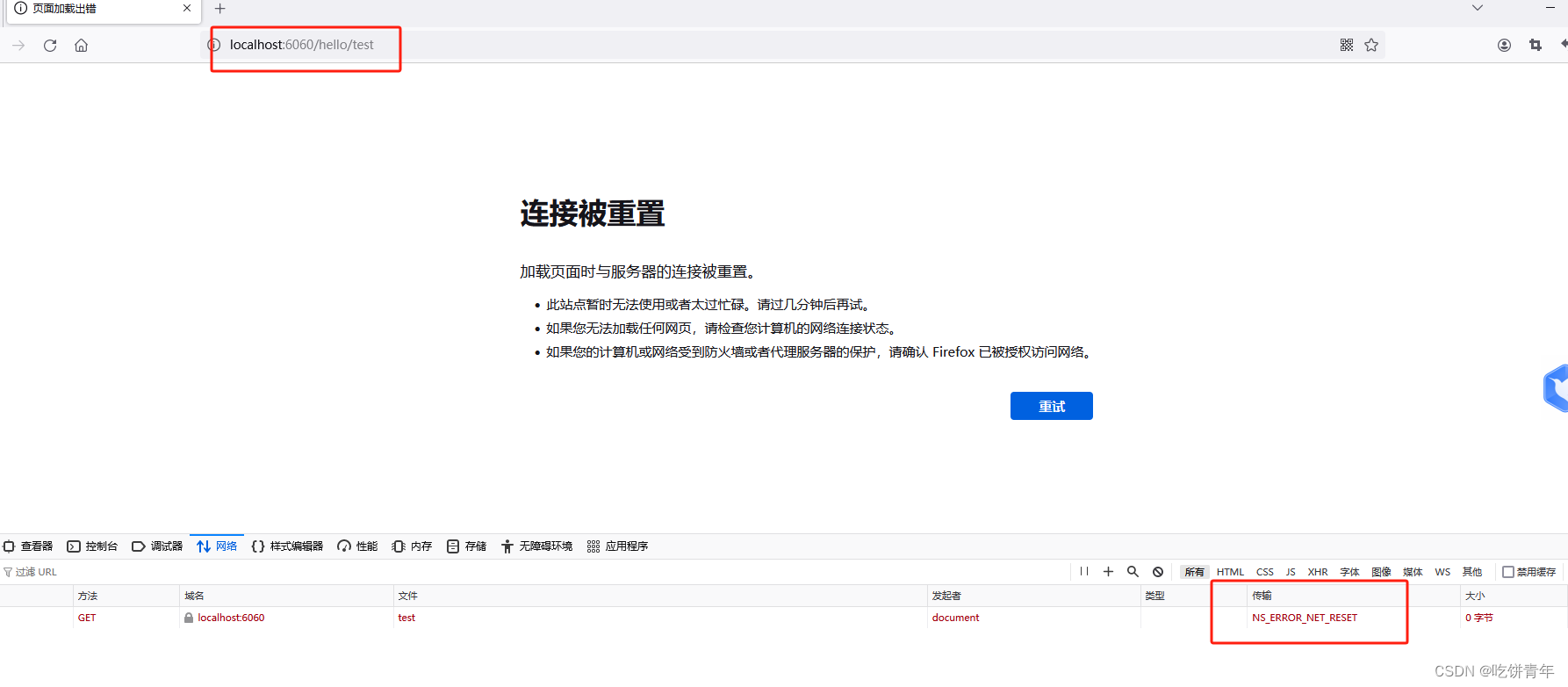
解决方案
增加配置
proxy_http_version 1.1;
proxy_set_header Connection “”;
#user nobody;
worker_processes 1;
error_log logs/error.log;
#error_log logs/error.log notice;
error_log logs/error.log info;
pid logs/nginx.pid;
events {
worker_connections 1024;
}
http {
include mime.types;
default_type application/octet-stream;
log_format main '$remote_addr - $remote_user [$time_local] "$request" '
'$status $body_bytes_sent "$http_referer" '
'"$http_user_agent" "$http_x_forwarded_for"';
access_log logs/access.log main;
sendfile on;
#tcp_nopush on;
keepalive_timeout 65;
upstream backend {
server 127.0.0.1:7070;
keepalive 50;
}
#gzip on;
server {
listen 6060;
server_name 127.0.0.1;
access_log logs/host.access.log main;
client_max_body_size 20m;
client_header_buffer_size 32k;
location / {
proxy_pass http://backend;
proxy_http_version 1.1;
proxy_set_header Connection "";
}
}
}
错误2:net::ERR_CONTENT_DECODING_FAILED 200 (OK)

解决方案
修改前置应用返回ng的响应流处理方法,检测到响应头中含有Content-Encoding:gzip对报文内容做压缩处理,再返给ng
public static void returnStream(HttpResponse forwardResponse, HttpServletResponse response) {
//拷贝转发响应头携带的信息
Map<String, List<String>> headers = forwardResponse.headers();
if (CollectionUtil.isNotEmpty(headers)) {
log.info("----------------------------------------------");
for (Map.Entry<String, List<String>> entry : headers.entrySet()) {
if (CollectionUtil.isNotEmpty(entry.getValue())) {
response.addHeader(entry.getKey(), entry.getValue().get(0));
log.info("响应头信息:[{}:{}]", entry.getKey(), entry.getValue().get(0));
} else {
response.addHeader(entry.getKey(), "");
}
}
}
//输出响应日志
String contentType = forwardResponse.header("Content-Type");
if (StringUtils.isNotBlank(contentType) && contentType.toLowerCase().startsWith(MediaType.APPLICATION_JSON_VALUE)) {
String body = forwardResponse.body();
if (body.length() > 1000) {
log.info("请求响应长度大于1000,只打印前1000个字符,详情可查看转发服务:{}", StrUtil.cleanBlank(body).substring(0, 1000));
} else {
log.info("请求响应:{}", StrUtil.cleanBlank(body));
}
}
OutputStream outputStream = null;
GZIPOutputStream gzipOut = null;
try {
response.setCharacterEncoding("UTF-8");
outputStream = response.getOutputStream();
String contentEncoding = forwardResponse.contentEncoding();
if(StringUtils.isNotBlank(contentEncoding) && contentEncoding.equalsIgnoreCase("gzip")) {
log.info("--响应开始压缩--");
gzipOut = new GZIPOutputStream(outputStream);
IoUtil.write(gzipOut, false, forwardResponse.bodyBytes());
gzipOut.flush();
gzipOut.finish();
log.info("--响应压缩完成--");
} else {
IoUtil.write(outputStream, false, forwardResponse.bodyBytes());
outputStream.flush();
}
} catch (IOException e) {
log.error("流读取IO异常", e);
throw new RuntimeException(e);
} finally {
if (gzipOut != null) {
try {
gzipOut.close();
} catch (IOException e) {
throw new RuntimeException(e);
}
}
if (outputStream != null) {
try {
outputStream.close();
} catch (IOException e) {
throw new RuntimeException(e);
}
}
}
}
高版本Nginx
最开始我本地复现并没有关注到ng的版本,所以开始使用的是1.25.3的版本,还衍生出了新的问题也贴出来供大家参考下。
#user nobody;
worker_processes 1;
error_log logs/error.log;
error_log logs/error.log notice;
error_log logs/error.log info;
pid logs/nginx.pid;
events {
worker_connections 10000;
}
http {
include mime.types;
default_type application/octet-stream;
log_format main '$remote_addr - $remote_user [$time_local] "$request" '
'$status $body_bytes_sent "$http_referer" '
'"$http_user_agent" "$http_x_forwarded_for"';
access_log logs/access.log main;
sendfile on;
tcp_nopush on;
keepalive_timeout 65;
gzip on;
upstream backend {
server 127.0.0.1:7070;
keepalive 50;
}
server {
listen 6060;
server_name 127.0.0.1;
access_log logs/host.access.log main;
client_max_body_size 20m;
client_header_buffer_size 32k;
location / {
proxy_pass http://backend;
proxy_http_version 1.1;
proxy_set_header Connection "";
}
# redirect server error pages to the static page /50x.html
#
error_page 500 502 503 504 /50x.html;
location = /50x.html {
root html;
}
}
}
错误1:502 Bad Gateway

解决方案
通过配置ng的错误日志可以查到如下错误:
2024/03/28 01:16:07 [error] 8352#5480: *43 upstream sent duplicate header line: "Transfer-Encoding: chunked", previous value: "Transfer-Encoding: chunked" while reading response header from upstream, client: 127.0.0.1, server: 127.0.0.1, request: "GET /noauth/captcha/slide-image HTTP/1.1", upstream: "http://127.0.0.1:7070/noauth/captcha/slide-image", host: "localhost:6060"
意思是请求头中行Transfer-Encoding: chunked重复导致的;
这个只需要在后端服务中返回ng之前移除请求头就可以了。
注意:这是因为proxy_http_version 1.1;
proxy_set_header Connection “”; 这两个配置导致的,高版本nginx中会自动加入Transfer-Encoding: chunked,所以从后端传过来的response中也存在就会重复,nginx1.16.1版本就不会出现这个问题。

参考
upstream sent duplicate header line: “Transfer-Encoding: chunked”
总结
一个gzip引发的案件,原因是因为过waf的时候,waf会自动引入gzip压缩处理,导致前置应用没有处理,解决此问题的方案有2。
方案一
前置应用获取到目标服务的响应结果后,已经是解压后的数据,这是因为hutool是一个http客户端,如果服务端返回的response中带有gzip的标志,hutool获取到的结果已经是解压过后的数据,可以继续移除hutool获取到的响应头中的Content-Encoding:gzip往外继续抛即可,这样抛到ng的时候也是不带gzip头信息的,数据也刚好搭对。但是注意这就失去了压缩的意义了,会损失一些传输损耗,达不到压缩的积极意义。
方案二
那就是检测到响应头中带有gzip标识,返回响应流的时候,做压缩处理,同样是响应头和响应体搭对即可。
未解之谜
问题
当我们解决完上面ng的问题之后,发现一个很奇特的现象是我们刷新的第一个接口有数据返回,但是后续的接口却没有数据,http请求甚至没有返回响应码给前端!
原因
我们的代码是这样写的,我们使用了finish方法,而没有使用flush方法
gzipOut = new GZIPOutputStream(outputStream);
IoUtil.write(gzipOut, false, forwardResponse.bodyBytes());
gzipOut.finish();
我们看到GZIPOutputStream的构造函数是这样的,恍然大悟
/**
* Creates a new output stream with a default buffer size.
*
* <p>The new output stream instance is created as if by invoking
* the 2-argument constructor GZIPOutputStream(out, false).
*
* @param out the output stream
* @exception IOException If an I/O error has occurred.
*/
public GZIPOutputStream(OutputStream out) throws IOException {
this(out, 512, false);
}
追溯到他的父类,发现了问题,512byte的数组,可以认为是缓冲区,如果不进行flush是不会写出数据。
/**
* Creates a new output stream with the specified compressor,
* buffer size and flush mode.
* @param out the output stream
* @param def the compressor ("deflater")
* @param size the output buffer size
* @param syncFlush
* if {@code true} the {@link #flush()} method of this
* instance flushes the compressor with flush mode
* {@link Deflater#SYNC_FLUSH} before flushing the output
* stream, otherwise only flushes the output stream
*
* @throws IllegalArgumentException if {@code size <= 0}
*
* @since 1.7
*/
public DeflaterOutputStream(OutputStream out,
Deflater def,
int size,
boolean syncFlush) {
super(out);
if (out == null || def == null) {
throw new NullPointerException();
} else if (size <= 0) {
throw new IllegalArgumentException("buffer size <= 0");
}
this.def = def;
this.buf = new byte[size];
this.syncFlush = syncFlush;
}
经过上面追查,我们恍然大悟,我们调用的第一个接口是图形验证码,数据量早就超过了512,但是后续的接口却没这么幸运!至此,我们遇到的所有问题都已经解决。并且我们发现,finish方法是不需要调用的,如果调用了close方法就会自己执行finish方法。
public void close() throws IOException {
if (!closed) {
try {
finish();
} finally {
if (usesDefaultDeflater)
def.end();
}
out.close();
closed = true;
}
}

